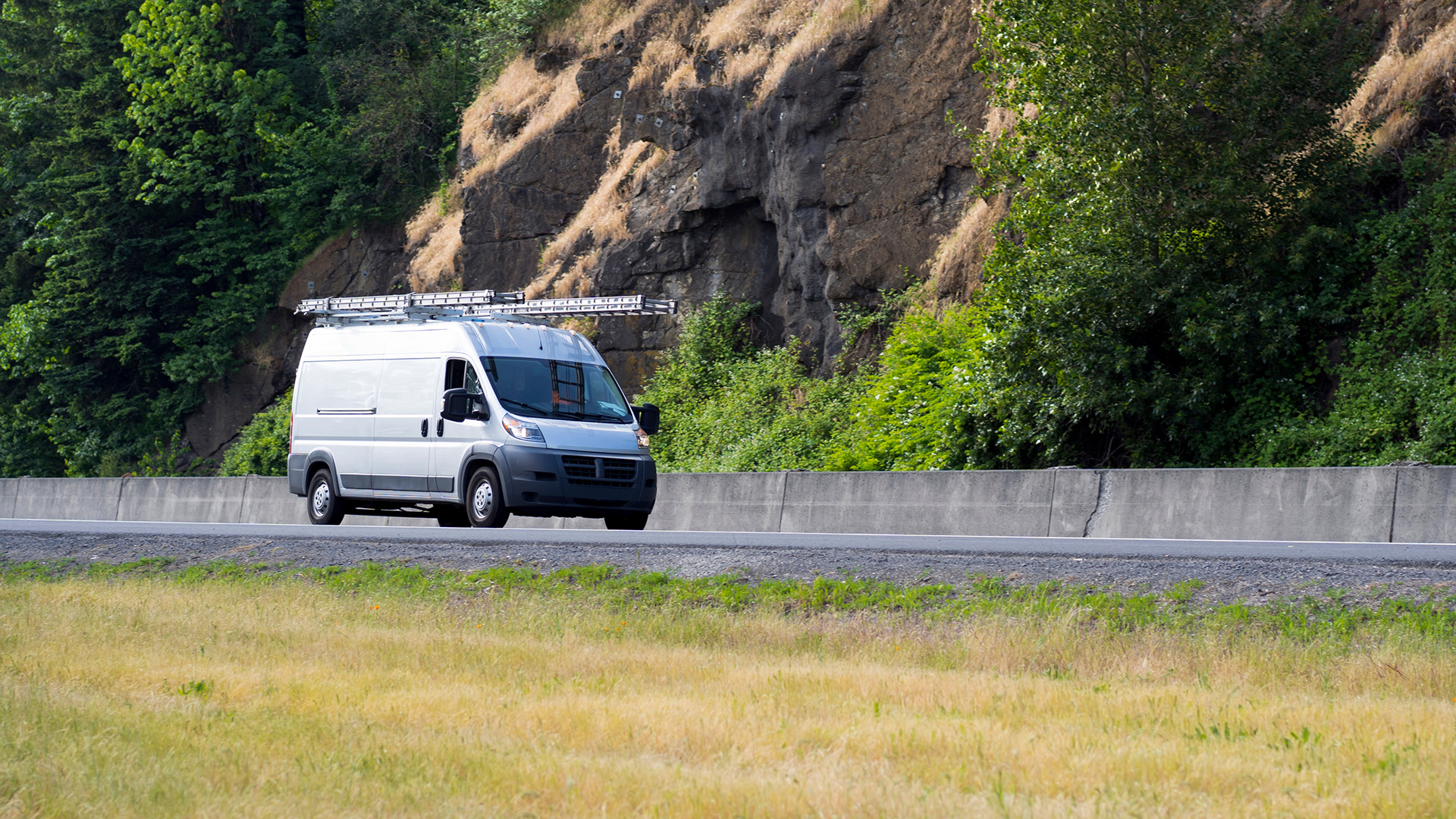The easier way to roll out telematics in your larger fleet
Make the transition to telematics easier with these tips on how to roll out telematics successfully in your large business fleet.

Dec 7, 2017
Updated: Apr 18, 2023

Dealing with change can be difficult in any type or size of business. In fact, with rapid evolving technology and drastic shifts in company cultures, “change management” is even popping up as a focus in business management degrees. If you are hesitant to roll out telematics technology to your company, don’t be. The process doesn’t have to be difficult.
In this article, we review four common roll out challenges and provide tips on how to deal with them.
See also: Deploying telematics in large fleets using project management
Challenge #1: Insufficient Project Management
There are several steps that should be taken into consideration when planning a telematics project, whether the project is large or small. In some cases, the project management component is overlooked and can have a negative impact on the outcome, or on your overall experience as a first-time telematics adopter.
A project manager can help keep track of progress and ensure milestones are met. Although Geotab telematics devices are simple to install, it’s important for the reseller to follow up regularly to help fleets with next steps.
See also: How to rightsize your fleet in five simple steps
Solution: Get the project manager involved right from the start
Here’s a glimpse at what the process should look like to help overcome any challenges when implementing a telematics program. Telematics resellers play a critical role in each step.
The Telematics Roll Out Process:
- The reseller should assign a project manager when the deal is almost closed.
- Hold a meeting with your telematics provider and partners to discuss requirements, who the stakeholders are, launch date, pertinent details of the project, and setting the right expectations so everyone is on the same page. This also helps upper management understand the project better, so they can communicate to drivers how the system will work later in the process.
- Write up the requirements in a Scope of Work (SOW) with the reseller. This document describes the work to be performed and is agreed upon.
The SOW should contain:
- Milestones
- Reports
- Deliverables
- Products that are expected to be provided
- Budget
- Installation schedule
- Required resources
- All possible risks
Communication is key, so it’s crucial to have regular meetings with the stakeholders like executives and fleet managers during the project and a few weeks after implementation.
Challenge #2: Information overload
Sometimes too much information has more of a negative impact than sharing just the pertinent details. Having access to all the data is great, but not knowing what to do with that data makes for an unsuccessful venture. This goes for everyone involved in the telematics project — from the level of an executive, manager, or even a driver.
Solution: Don’t be afraid to ask questions
If you or your team are at any point overwhelmed with information you’re receiving from your telematics partner, speak up. You’re more likely to forget or quickly lose interest because it sounds more complicated than it really is. Resellers and providers should be conscious of sharing their knowledge to help fleets achieve their goals.
Whether it’s improving safety, lowering operating costs or reducing fuel use, it’s okay to tell your telematics partner if they need to slow down.
Here are a few ways to help avoid information overload:
- Work with your telematics provider to build a business case and set goals for improvement that fit your type of operations.
- Talk to your provider about how they can customize reports so that managers only receive what they need for their teams and not for the whole company. This allows managers to focus on their direct reports and help reach their team goals, which in turn affects the overall company goals. See examples of custom fleet management reports here.
- Plan and execute a report on current operations, such as productivity, maintenance costs, etc. Your telematics provider can help you establish what these are based on your goals for why you want to implement telematics.
- Collaborate and work with your telematics provider for feedback, guidance, training, learning materials, assistance with large deployments, etc.
Challenge #3: Setting focused, achievable goals
Many customers want to see immediate improvement in cost savings once the telematics project starts. However, having broad goals makes it difficult to determine what the actual focus should be on. For example, a company says they want to improve driver safety. But how exactly will this happen? What steps need to be taken to improve in this area and show a return on investment?
Solution: Define your metrics and check progress often
Here are steps to take to ensure your goals are measurable so you can make incremental changes. Start by breaking down the goal:
- Define your goal. For example, a good specific goal would be to reduce the number of fleet collisions annually by 40%.
- Decide on metrics and how the goal will be measured using telematics data. In the example above, you would likely want to focus on driving behavior metrics and how you’re going to improve them. For example, this could be done through a safe driver recognition and rewards program.
- Set a timeframe for goal completion. Consider what the intermediate goals would be based on the overall timeline (e.g. where should the numbers be at in three months, six months and so on).
- Hold weekly meetings to compare the previous week to the current stats to verify successful improvements and how quickly changes are occurring.
- Continue to focus on the improvements. Obtain recommendations from your telematics provider on other ways to continue to reduce costs.
It’s also important to use the telematics device and software to its full potential. This will help meet and identify the return on investment (ROI) that should be established within your goals. With telematics, the ROI should come automatically when you set and work toward specific goals.
Challenge #4: Establishing employee expectations and benefits
We always hear the saying “big brother is watching,” because in many cases employees are not keen on telematics. That’s because they have a misunderstanding of why management is installing the devices.
Many drivers assume the devices are being added to their work vehicles so that management can track their every move. When this misconception isn’t dealt with early on, employees become uneasy. This in turn can start to have a negative impact on the morale within the company. It can also make it more difficult to reach a return on investment, especially when your goals are related to driving behavior.
Recommended: Debunking the Top 10 Vehicle Tracking Myths
Solution: Stay positive and be transparent
Change isn’t easy for many, so it’s important to be prepared for employee pushback. Here are some tips when it comes to implementing telematics with your employees:
- The project needs to be adopted by leadership from the top down. Everyone should speak positively of the venture.
- Set expectations from the onset with upper management.
- Explain the reason for the telematics program to all employees. Be transparent in what you’re trying to improve.
- Try to create incentives or have individual/team competitions for the managers and drivers to keep the moral positive.
Your company may face other challenges, internal or external, but these tips can help you overcome a few common challenges for a successful fleet rollout.
To stay up-to-date on fleet news and best practices, please subscribe to the Geotab newsletter.
Related:
Subscribe to get industry tips and insights

Veronica Jung is a Solutions Specialist, Team Lead for Geotab.
Table of Contents
- Challenge #1: Insufficient Project Management
- Solution: Get the project manager involved right from the start
- Challenge #2: Information overload
- Solution: Don’t be afraid to ask questions
- Challenge #3: Setting focused, achievable goals
- Solution: Define your metrics and check progress often
- Challenge #4: Establishing employee expectations and benefits
- Solution: Stay positive and be transparent
Subscribe to get industry tips and insights
Related posts

9 strategies to increase fleet fuel efficiency and lower fuel costs
July 8, 2025
4 minute read


Field service is losing money to bad data: Go beyond GPS with smarter telematics
June 27, 2025
3 minute read

The fleet safety incentive program checklist for driver engagement that lasts
June 19, 2025
2 minute read

Unlock field service ROI: Your practical guide to connected operations playbook
June 9, 2025
3 minute read

Multi-stop route planners: A fleet manager's guide + best tools in 2025
June 5, 2025
5 minute read